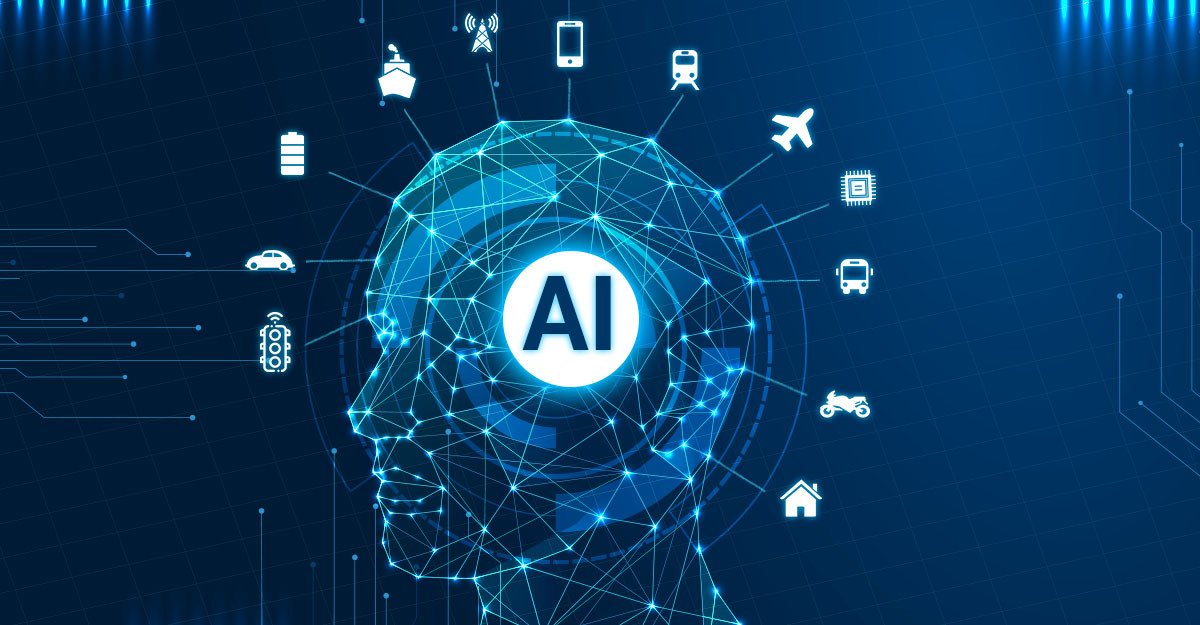Introduction
Artificial Intelligence (AI) is no longer just a concept from science fiction. It has rapidly integrated into our daily lives and industries, proving its importance in modern technology. From voice assistants like Siri and Alexa to recommendation algorithms on Netflix, AI is omnipresent. But the question remains: Is artificial intelligence the future of technology? In this article, we will explore the various facets of AI, its current applications, future potential, and the challenges it faces.
What is Artificial Intelligence?
Artificial Intelligence refers to the simulation of human intelligence processes by machines, especially computer systems. These processes include learning (acquiring information and rules for using it), reasoning (using the rules to reach approximate or definite conclusions), and self-correction. AI is broadly categorized into three types:
- Narrow AI: Also known as Weak AI, this type of AI is designed to perform a narrow task (e.g., facial recognition or internet searches) and is limited to the specific task it is programmed for.
- General AI: This type, also known as Strong AI, can understand, learn, and apply intelligence across a broad range of tasks, similar to a human.
- Superintelligent AI: This hypothetical AI surpasses human intelligence and capability in all aspects, including creativity, general wisdom, and problem-solving.
Historical Background of AI
The concept of AI dates back to ancient times, with myths and stories about intelligent robots and mechanical beings. However, the formal inception of AI as a field of study began in the mid-20th century. Notable milestones include:
- 1956: The term “Artificial Intelligence” was coined at the Dartmouth Conference, marking the birth of AI as an academic discipline.
- 1997: IBM’s Deep Blue defeated world chess champion Garry Kasparov, showcasing the potential of AI in complex problem-solving.
- 2011: IBM’s Watson won the game show Jeopardy!, highlighting AI’s capabilities in natural language processing and understanding.
AI in Everyday Life
AI has seamlessly integrated into our everyday activities, enhancing convenience and efficiency:
- Smartphones: AI-powered virtual assistants like Siri and Google Assistant help manage tasks, answer questions, and provide personalized recommendations.
- Smart Homes: AI enables smart home devices such as thermostats, security cameras, and lighting systems to learn from user habits and optimize energy usage.
- Healthcare: AI applications in healthcare include diagnostic tools, personalized treatment plans, and robotic surgery, improving patient outcomes and operational efficiency.
AI in Business and Industry
Businesses across various industries are leveraging AI to streamline operations and drive innovation:
- Manufacturing: AI optimizes production processes, predicts maintenance needs, and enhances quality control through machine learning algorithms.
- Finance: AI assists in fraud detection, risk management, and personalized banking services, providing a competitive edge in the financial sector.
- Customer Service: AI-driven chatbots and virtual assistants enhance customer support by providing quick, accurate responses and improving customer satisfaction.
AI in Transportation
AI is revolutionizing the transportation sector, making travel safer and more efficient:
- Autonomous Vehicles: Self-driving cars use AI to navigate, recognize obstacles, and make real-time decisions, promising to reduce accidents and traffic congestion.
- Traffic Management: AI systems analyze traffic patterns and adjust signals to optimize traffic flow, reducing commute times and emissions.
- Logistics: AI improves supply chain management by predicting demand, optimizing routes, and managing inventories.
AI and Data Analysis
The synergy between AI and big data is driving significant advancements in data analysis:
- Big Data: AI algorithms analyze vast amounts of data to uncover patterns, trends, and insights that were previously impossible to detect.
- Predictive Analytics: AI enables predictive analytics, allowing businesses to forecast trends, customer behavior, and market developments with high accuracy.
- Research and Development: AI accelerates research and development by analyzing scientific data, generating hypotheses, and identifying potential breakthroughs.
Ethical Considerations in AI
Despite its benefits, AI raises several ethical concerns that need to be addressed:
- Privacy Concerns: AI systems often require large amounts of personal data, raising issues about data privacy and security.
- Job Displacement: Automation powered by AI can lead to job losses in certain sectors, necessitating strategies for workforce retraining and adaptation.
- Bias in AI Algorithms: AI systems can perpetuate and even exacerbate existing biases in data, leading to unfair outcomes in areas like hiring and law enforcement.
AI and Education
AI is transforming education by personalizing learning and streamlining administrative tasks:
- Personalized Learning: AI-powered educational platforms adapt to individual learning styles and paces, providing customized educational experiences.
- Administrative Tasks: AI automates administrative tasks such as grading and scheduling, allowing educators to focus more on teaching and student interaction.
- Future of AI in Education: The continued integration of AI in education promises to make learning more accessible, engaging, and effective.
AI and Creativity
AI is making inroads into creative fields, though it faces certain limitations:
- Art and Music: AI algorithms generate art, music, and literature, pushing the boundaries of creativity and human-AI collaboration.
- Content Creation: AI assists in content creation, from writing articles to generating marketing materials, enhancing productivity and creativity.
- Limitations: Despite its capabilities, AI lacks true creativity and emotional depth, which are intrinsic to human artistic expression.
The Future of AI
The potential future applications of AI are vast and varied:
- Space Exploration: AI aids in space exploration by analyzing data, controlling rovers, and identifying potential landing sites on other planets.
- Environmental Conservation: AI helps monitor and protect endangered species, manage natural resources, and combat climate change through data analysis and predictive modelling.
- Potential Applications: Future AI applications could include advancements in healthcare, education, entertainment, and beyond, transforming every aspect of our lives.
Challenges and Risks of AI
Despite its potential, AI faces several challenges and risks:
- Technological Challenges: Developing AI systems that are reliable, secure, and scalable is a significant technical challenge.
- Security Risks: AI systems are vulnerable to hacking, data breaches, and malicious attacks, posing security risks.
- Ethical Dilemmas: The moral implications of AI, such as decision-making in life-and-death situations, require careful consideration and regulation.
AI Regulations and Policies
Effective regulation and policy are crucial for the responsible development and deployment of AI:
- Current Regulations: Existing AI regulations vary widely across countries, reflecting different approaches to innovation and risk management.
- Proposed Policies: Policymakers are proposing new regulations to address AI’s ethical, legal, and societal impacts, focusing on transparency, accountability, and fairness.
- International Cooperation: Global cooperation is essential to establish standardized AI regulations and ensure the responsible development of AI technologies.
Conclusion
Artificial Intelligence is undeniably reshaping the technological landscape. Its applications span from enhancing everyday conveniences to solving complex global challenges. As we look to the future, it is clear that AI will play a pivotal role in driving technological advancements. However, addressing the ethical, social, and regulatory challenges accompanying this transformative technology is equally important. By doing so, we can harness the full potential of AI to create a better, more efficient, and equitable world.
FAQs
What is the most advanced form of AI currently?
The most advanced form of AI currently is Narrow AI, which is designed for specific tasks. General AI and Superintelligent AI are still theoretical concepts under research and development.
How does AI impact job markets?
AI impacts job markets by automating routine tasks, potentially leading to job displacement in certain sectors. However, it also creates new job opportunities in AI development, maintenance, and other emerging fields.
Can AI surpass human intelligence?
While current AI systems are far from surpassing human intelligence, the possibility of Superintelligent AI remains a topic of debate among experts. Significant advancements and ethical considerations are required before achieving such a milestone.
How is AI regulated?
AI is regulated through a combination of national and international policies, focusing on transparency, accountability, and ethical considerations. Regulations vary by country and are continuously evolving to keep pace with technological advancements.
What are the potential risks of AI?
Potential risks of AI include privacy violations, job displacement, security threats, and ethical dilemmas in decision-making processes. Addressing these risks requires robust regulations, ethical guidelines, and ongoing research.


